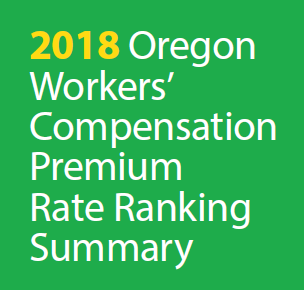On a biennial basis, the Oregon Department of Consumer and Business Services publishes a ranking of the states with respect to premiums charged on workers’ compensation insurance. The Oregon Report is the “gold standard” in comparing the cost of insurance in the various states. Usually, California, New York and New Jersey are the priciest and Arkansas, North Dakota and Indiana the cheapest.
The Oregon Report does not reveal the reasons for the cost differences but only that there are such differences.
One interesting take away from the 2018 Report is to compare the rates in Pennsylvania, Maryland and Virginia ‒ three states which are neighbors.
In 2014, Pennsylvania was the 17th most expensive state according to the Oregon Report (see Oregon Report 2016 in the Archive Section of this website). In that year, at the behest of insurance interests, Pennsylvania enacted “reforms” to its workers’ compensation law including an effective ban on physician dispensing of medicines from their offices. One of the principal leaders of that effort was Representative Marguerite Quinn who is now proposing the same sort of “reforms” as a Subcommittee Chair of the National Conference of Insurance Legislators (NCOIL).
Did those “reforms” work? Did those “reforms” reduce the cost of workers’ compensation insurance in Pennsylvania? Apparently not.
In 2014, Pennsylvania was the 17th costliest state in the nation and now in 2018, four years after the “reforms,” it remains the 17th costliest state.
Neighboring Maryland and Virginia have enacted no reforms sought by insurers even though Pennsylvania “reforms” were proposed in both states. How are they doing cost wise? Far better than Pennsylvania!
Maryland was #38 in 2014; it is #39 in 2018.
Virginia was #47 in 2014; it is #41 in 2018.
In most cases, the “Index Rate” mentioned in the Oregon Report has gone down. For example, the California rate was 3.24 in 2016 and is now 2.87. The New Jersey rate was 3.92 in 2016 and is now 2.84. The Maryland rate was 1.50 in 2016 and is now 1.33.
Meanwhile the Pennsylvania “Index Rate” ticked upward between 2016 and 2018.
Perhaps Representative Quinn and NCOIL should look at Maryland and Virginia for ways to control costs rather than knee jerk proposals from the insurance industry.
Download Oregon Report 2018
1211 Cathedral Street, Baltimore, Maryland 21201 – Call Our Offices – 443.449.2287
1211 Cathedral Street, Baltimore, Maryland 21201 – Call Our Offices – 443.449.2287



